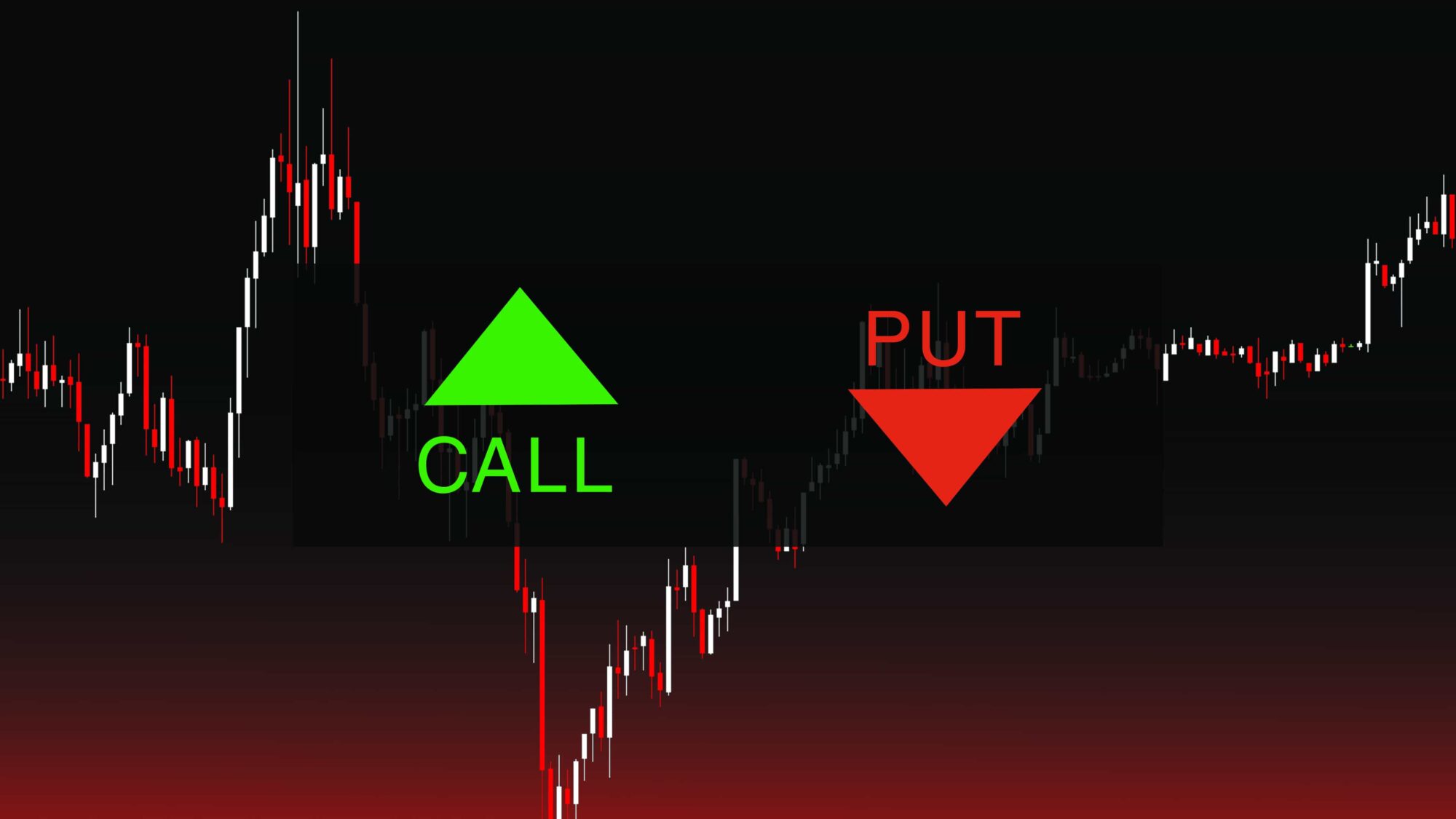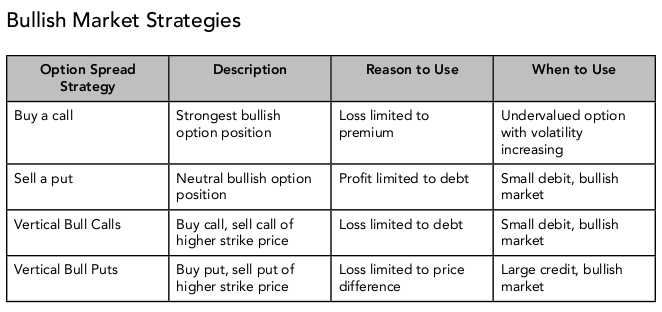Have you ever looked at the stock market and wished you could participate in the exhilarating dance of rising and falling prices, but felt intimidated by the complexity of it all? Maybe you’ve heard whispers of “options” and wondered if they could be the key to unlocking your financial potential. The truth is, options trading can be a powerful tool for investors of all levels, but it requires understanding the nuances of this unique market. It’s not just about predicting price movements; it’s about strategically managing risk and maximizing profit.

Image: www.asktraders.com
In this comprehensive guide, we’ll explore the exciting world of options trading strategies, uncovering the secrets behind their power and potential. From the fundamentals of options contracts to advanced strategies for navigating market volatility, we’ll provide you with the knowledge you need to confidently and strategically approach this fascinating aspect of the financial world.
Option Basics: The Foundation of Your Trading
Understanding Options Contracts
Before diving into strategies, it’s essential to understand the building blocks of options trading. An option, in essence, is a contract that gives the buyer the right, but not the obligation, to buy or sell an underlying asset (like a stock) at a specific price (the strike price) on or before a specific date (the expiration date).
There are two main types of options:
- Calls: A call option grants the right to buy an asset.
- Puts: A put option grants the right to sell an asset.
Let’s break it down with an example: Imagine you buy a call option for $10, with a strike price of $100 on 100 shares of XYZ stock, expiring in three months. This means you have the right to buy 100 shares of XYZ at $100 per share, anytime within the next three months. If the price of XYZ stock goes above $100, you’re in a good position to exercise your option, buying the shares at $100 and selling them in the market at the higher price, making a profit. However, if the price of XYZ stays below $100, you might choose not to exercise the option (letting it expire worthless) and lose the initial $10 premium you paid for the right to buy.
Key Option Terminology: Unraveling the Jargon
Option trading is often associated with complex terminology. Understanding these terms is pivotal:
- Strike Price: The pre-determined price at which the option holder can buy or sell the underlying asset.
- Expiration Date: The last day the option can be exercised.
- Premium: The price paid for the option contract. It represents the value of the right you’re acquiring.
- In-the-Money (ITM): An option is ITM when the underlying asset’s price is above the strike price (for calls) or below the strike price (for puts).
- Out-of-the-Money (OTM): An option is OTM when the underlying asset’s price is below the strike price (for calls) or above the strike price (for puts).
- At-the-Money (ATM): An option is ATM when the strike price and the underlying asset’s price are the same.

Image: s3.amazonaws.com
The Power of Options Strategies: Beyond Simple Buying and Selling
While buying and selling options contracts can be beneficial, a world of possibilities opens up when you delve into strategic combinations of these contracts. Here are some of the most popular options trading strategies:
Covered Call Writing: Generating Income with Limited Risk
Selling covered call options is a popular strategy among experienced investors. This involves selling a call option on a stock you already own. The goal is to generate additional income (the premium you receive when selling the option) while mitigating potential downside risk on your stock holding. If the stock price stays below the strike price, you keep the premium and the stock. However, if the price rises above the strike price, the buyer of the call will exercise their right to buy the stock from you at the strike price, potentially limiting your upside profit. It’s a strategy that balances potential gains with a measure of risk management.
Cash-Secured Put Writing: Profiting from Volatility With Protection
Cash-secured put writing involves selling a put option and setting aside an amount of cash equal to the strike price multiplied by the number of shares covered by the option. This strategy is attractive for those who believe the underlying asset’s price will stay above the strike price, but it also offers protection against downside risk – if the price falls below the strike price, you have the cash to cover the purchase of the stock at the strike price.
Covered Put Writing: A Conservative Option for Generating Income
Similar to covered call writing, covered put writing involves selling a put option on a stock you already own. The strategy can be profitable if the underlying asset’s price stays above the strike price, but it exposes you to potential risk if the price falls below the strike price, as you might be forced to buy the stock at the strike price. This can be a good strategy if you believe the price is unlikely to drop below the strike price.
Buying Protective Puts: Adding a Safety Net to Your Stock Portfolio
Buying a put option on a stock you own is known as a “protective put” strategy. This strategy allows you to limit potential losses on your stock position, as the put option gives you the right to sell the stock at the strike price, even if the price drops significantly. This is a valuable strategy for protecting gains or limiting potential losses on stocks that are already in your portfolio.
Selling Straddles: Betting on Low Volatility
A straddle involves buying both a put and a call option with the same strike price and expiration date. This strategy is most profitable when the underlying asset’s price remains close to the strike price, as the maximum potential loss is limited to the premium paid for the options. However, if the price moves significantly in either direction, the losses can be substantial.
Selling Strangles: Capitalizing on Limited Price Movements
A strangle is similar to a straddle but with a key difference – the put and call options in a strangle have different strike prices. This strategy is designed to profit from a limited change in the underlying asset’s price and is more cost-effective than a straddle. The losses are also limited to the premiums paid for the options, but only if the price doesn’t move significantly above or below the strike prices.
Buying Bull Call Spreads: Limited Risk, Limited Gain
A bull call spread is a limited-risk, limited-gain strategy for investors who believe the underlying asset’s price will rise. It involves buying a call option and selling another call option with a higher strike price. This strategy allows you to profit if the price increases, but your maximum potential gain is limited to the difference between the two strike prices. You also pay a lower premium than for a single call, as you are essentially selling a portion of the potential profit.
Selling Bear Put Spreads: Limited Risk, Limited Gain
A bear put spread is a strategy used when you expect a limited decline in the underlying asset’s price. The strategy involves buying a put option and selling another put option with a lower strike price. This strategy allows you to profit if the price decreases, but if the price stays above the higher strike price, you will lose the premium you received for selling the lower strike price put option. The maximum loss is limited to the difference between the strike prices minus the premium received.
Iron Condors: A Neutral Volatility Strategy
An iron condor is a four-legged options strategy, a combination of both bull and bear spreads. It consists of selling an out-of-the-money call option, buying a further out-of-the-money call option, buying an out-of-the-money put option, and selling a further out-of-the-money put option. It’s a strategy for investors who expect the underlying asset’s price to stay within a specific range and is designed to generate profits from premium decay, while limiting the potential losses.
Butterfly Spreads: Betting on Limited Price Movement
Butterfly spreads are another options strategy that seeks to benefit from limited price movement in the underlying asset. The strategy involves buying two options at a middle strike price, selling one option at a strike price higher than the middle strike price, and selling one option at a strike price lower than the middle strike price. Butterfly spreads are more complex but offer a potential profit if the price remains within a specific range. They are often used to profit from volatility decay.
Navigating the Options Market: Risks and Responsibilities
While options trading offers a wide range of potential benefits, it’s crucial to understand the inherent risks associated with this market. It’s a highly volatile market with opportunities for significant gains, but also the potential for substantial losses. A nuanced understanding of risk management is essential. Here are some key points to consider:
Understand the Risks: Leverage, Expiration Dates, Volatility
Options trading magnifies potential profits, but it also magnifies potential losses. The use of leverage is inherent in options trading, as a relatively small premium can control a much larger amount of underlying asset. This leverage is a double-edged sword – while it amplifies profits, it also amplifies losses. Furthermore, options have limited expiration dates. As the expiration date approaches, the value of an option can decline rapidly if the underlying asset’s price is not moving in your favor. Volatility also plays a crucial role – high volatility can lead to rapid gains or losses, increasing the risk profile of options trading.
Implement Risk Management Techniques: Stop-Losses, Portfolio Diversification
Effective risk management is paramount in options trading. Consider using stop-loss orders to automatically exit a trade when the price reaches a predetermined level. This helps to limit potential losses, though it’s important to remember that sudden price drops could occur, potentially exceeding the stop-loss order. Diversifying your portfolio with a mix of options strategies and underlying assets can help mitigate overall risk, as a loss in one investment might be offset by gains in another.
Thorough Research: Market Analysis, Underlying Asset Understanding
Before entering any options trade, thorough research is crucial. Analyze the market trend, study the company’s financials, assess its overall risk profile, and understand the factors that could influence the underlying asset’s price. The more information you gather, the better-equipped you’ll be to make informed decisions.
Continuous Learning: Stay Up-to-Date with Market Trends and Strategies
The options market is constantly evolving. Stay informed about market trends, emerging strategies, and new regulations impacting the options market. Consider subscribing to reputable financial publications, attending seminars and webinars, and actively researching new strategies to enhance your knowledge base continuously.
Start Small and Gradually Increase Your Exposure: Test the Waters
If you’re new to options trading, begin with a small amount of capital and gradually increase your exposure as you gain experience and confidence. Practice on a paper trading account to test different strategies without risking real money. This allows you to learn from your mistakes and refine your approach in a safe environment. Remember, patience and discipline are key to success in options trading.
Options Trading Strategies
https://youtube.com/watch?v=Uy6vsHIQYhg
Conclusion
Options trading offers a powerful, yet complex, avenue for investors to enhance their portfolio management and potentially achieve significant gains. This comprehensive guide has provided a foundation for understanding option basics, exploring a diverse range of strategies, and navigating the inherent risks of this fascinating market. Remember, the key to success lies in thorough research, careful planning, risk management, and a commitment to continuous learning. As you venture into the world of options trading, keep in mind, knowledge is power, and the power to make informed decisions is the ultimate reward.






